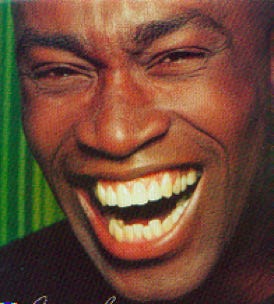The creativity of author, designer, broadcaster Ben Arogundade
Best Of Shakespeare: The 18 Most Memorable Othello Movie & Theatre Productions & Actor Performances
SINCE IT WAS FIRST performed in 1604, the title role in Shakespeare's Othello has been played by
thousands of actors in movie and theatre productions globally. Here are 18 of the most memorable depictions of the Moor. By Ben Arogundade. Mar.05.2021.
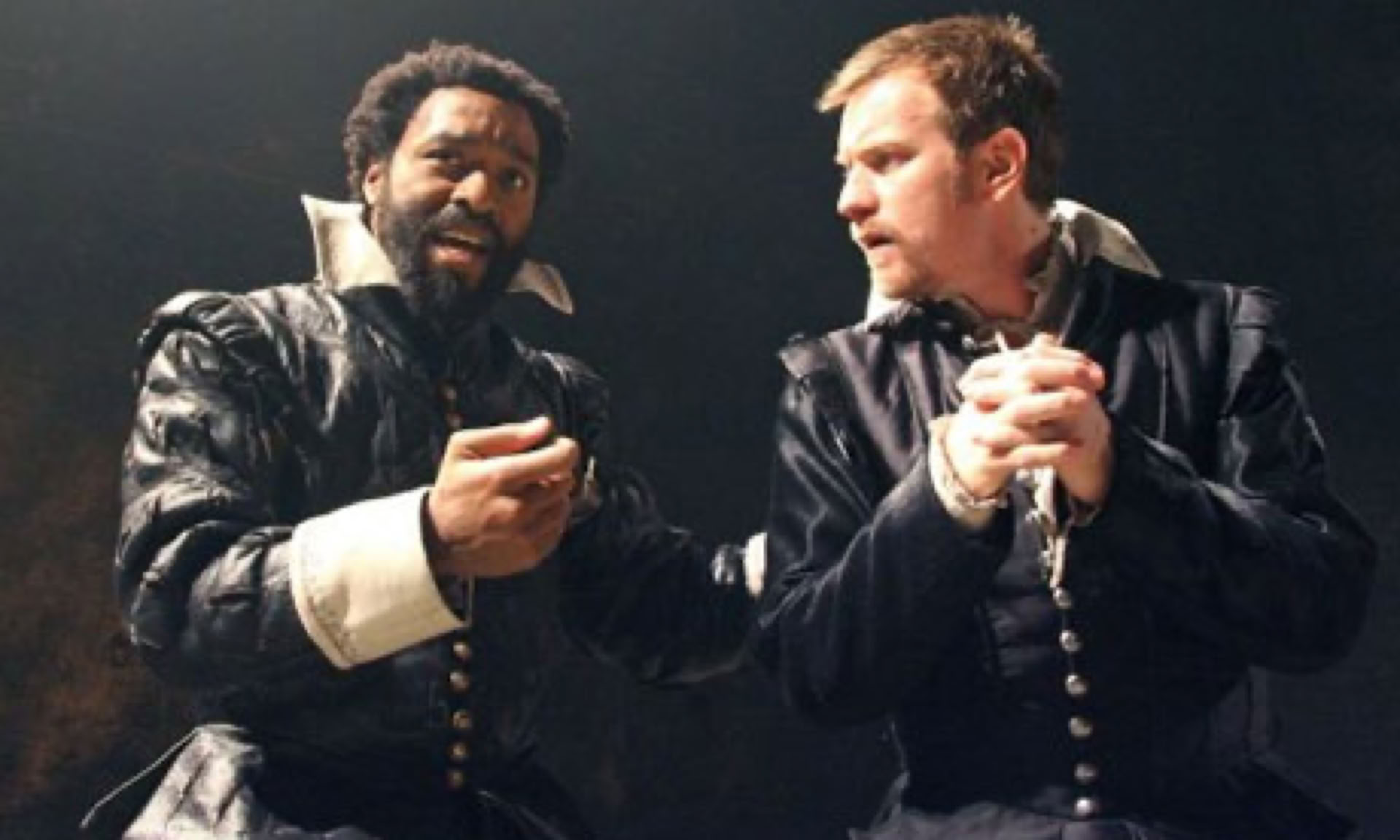
BEST OF OTHELLO: Actors Chiwetel Ejiofor and Ewan McGregor performed in one of the most memorable productions of William Shakespeare's Othello at London's Donmar Warehouse, December 2007, for which Ejiofor won the 2008 Olivier Award. Photo: T. Kenton.
ORIGINALLY ENTITLED, The Moor of Venice, the first production of Othello was performed by Shakespeare’s theatre group, the King’s Men, on November 1, 1604, in the Banqueting House of London’s Whitehall Palace. Today, movie and theatre productions and performances remain as popular as ever, and its central themes of racism, love, jealousy and betrayal are as relevant to life now as they were back then.
Scholars disagree on the Moor’s origins. Some argue that he is black, others that he is Arab. Despite this, up until recently he has been performed by white actors in blackface. Today, black actors have mostly re-appropriated the role, and the white Othellos are rare.
Re-evaluating the play’s dialogue, settings and costume has become standard for young directors of film and theatre eager to distinguish their productions from those of the past, and to appeal to contemporary audiences. The last four centuries has seen a rich diversity of film and theatre interpretations, both classic and modern. Here are 18 of the most memorable.
RICHARD BURBAGE - OTHELLO NO. 1
First to perform the role of the Moor in the theatre was Richard Burbage, star actor in the King’s Men, who played all of Shakespeare’s most celebrated parts. He was recognised as the foremost actor of his day — the Elizabethan equivalent of Tom Cruise or George Clooney. It was almost certainly Burbage that starred in Othello’s 1604 London theatre debut, although nothing is known of whether or not he appeared in blackface, or what costume he would have worn. Burbage’s appointment as 'Othello number one' set the racial blueprint for the casting of the Moor as a white actor — a convention that would last for over two centuries.
EDMUND KEAN
Many scholars consider Othello to be William Shakespeare’s most demanding role. It certainly proved to be that for English actor Edmund Kean, the most celebrated Othello of the 19th century. He actually collapsed onstage during a particularly emotive rendition of Act 3, Scene III of the play, performed on March 25th 1833 at London’s Royal Opera House theatre, Covent Garden. Keen was renowned for his ability to touch audiences with the pathos and kinetic energy of his performances. Poet Samuel Taylor Coleridge once remarked that, ‘Seeing him act was like reading Shakespeare by flashes of lightning’. Kean died two months after the incident, some say as a result of his excessively emotive performance.
IRA ALDRIDGE - BLACK OTHELLO NO.1
Over two hundred years after Richard Burbage set the trend for white Othellos, African American Ira Aldridge became the first black actor to perform the lead role. Born in New York in 1807, he emigrated to England in his late teens, where he succeeded in becoming a distinguished Shakespearean, featuring in many of the Bard’s roles, including his first major performance of Othello at London’s Royalty theatre in 1826.
Unsurprisingly given the times, there was considerable resistance to the presence of the world’s first black Othello. In one of his two performances in Covent Garden in 1833, a newspaper critic objected to Desdemona being “pawed about on the stage by a black man.” The Times had been just as scathing eight years prior, commenting that, “Owing to the shape of his lips it is utterly impossible for him to pronounce English.”
White opposition to Aldridge hampered his attempts to perform in productions at London theatres. He circumvented this by touring other British cities as well as continental Europe, where he was received more favourably. One Russian critic stated that his experiences watching him in Shakespeare’s roles ‘were undoubtedly the best that I have ever spent in the theatre’.
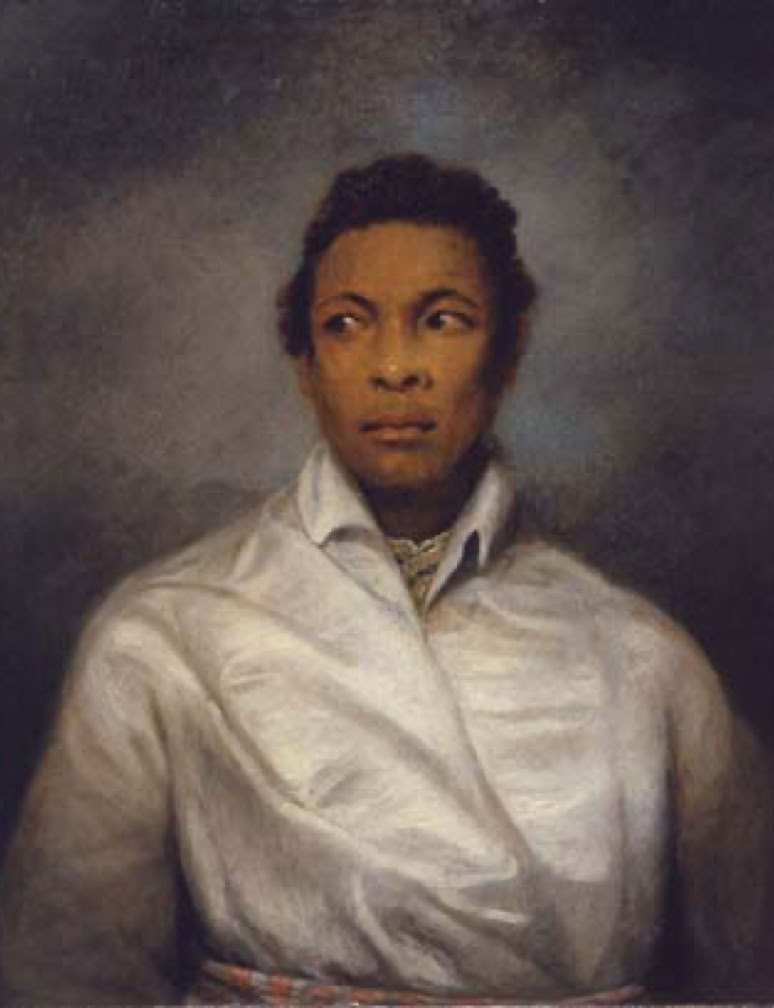

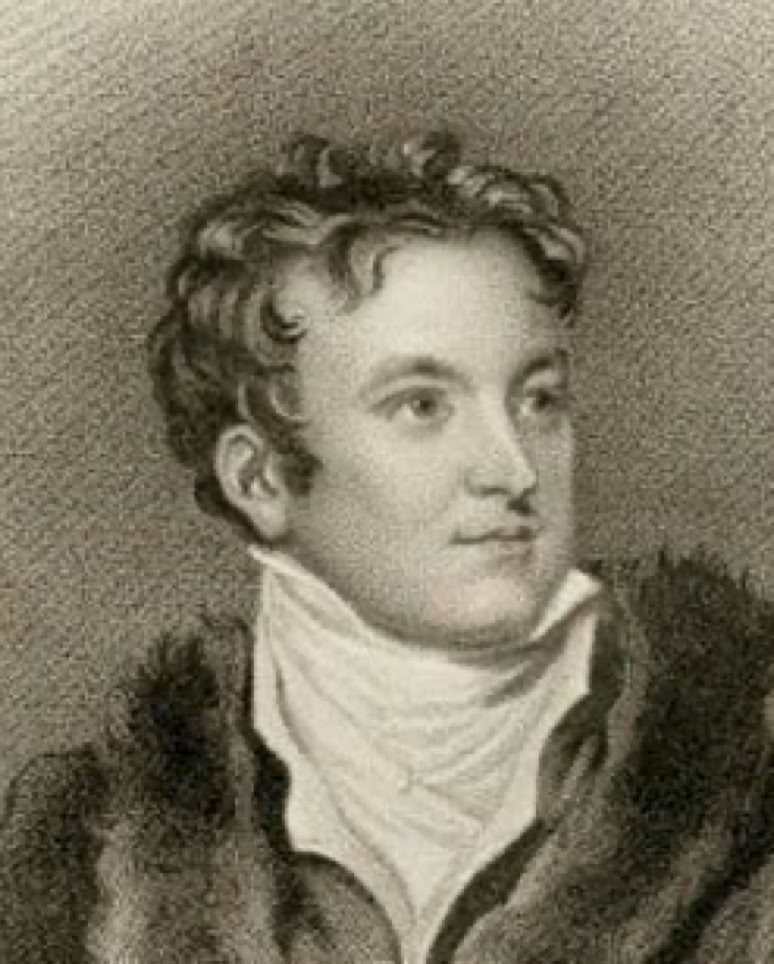

OTHELLO PLAYERS: [From the top] Although the play was written in 1604, no theatre production allowed a black performer to play Othello until 1826, when actor Ira Aldridge finally played the Moor on stage in London. Amongst the white actors who played Othello during that era were Englishmen Edmund Kean, William MacCready and Richard Burbage, who was the first actor ever to play the Moor in 1604.
TOMMASO SALVINI
Italian actor Tommaso Salvini garnered an international reputation playing Shakespeare’s tragic heroes. In 1869 he began regular tours of Europe and the Americas, performing Othello in theatres across London and New York. Amongst his fans were novelist Henry James and actor Konstantin Stanislavski, the father of method acting. Salvini’s appearances were both unique and bizarre, in that he spoke no English, and so his performances were bi-lingual affairs in which he would speak his lines in Italian, opposite an English-speaking Iago.
He was also an imposing figure, renowned for bringing new levels of passion and intensity to the role. But was he too passionate? It was alleged that the play’s final scene, depicting Desdemona’s murder, was enacted particularly aggressively in Salvini’s interpretations. So much so that it was rumoured that when performing in America some actresses refused to be his Desdemona.
SAMUEL PHELPS AND WILLIAM MACCREADY
In early 19th century England, Shakespeareans began exploring a new creative idea — that of playing both the roles of Othello and Iago. This was designed to test the actor’s dexterity, as well to attract audiences. In October 1837 at London’s Drury Lane theatre, actor Simon Phelps played Othello opposite fellow thespian William MacCready — best friend to Charles Dickens — as Iago. Then, in a subsequent performance they appeared together again, this time in opposite roles. Soon other actors followed suit. In 1880 Edwin Booth alternated with Henry Irving at the Lyceum theatre, while in 1955 Richard Burton and John Neville swapped roles for their season at the Old Vic.
PAUL ROBESON
After Ira Aldridge it would be another century before another black actor would be cast in the role of the Moor in a major production. Paul Robeson — lawyer, campaigner, academic, athlete, singer and actor — was that man. The son of a former slave, he had risen to become an international superstar by the time of his debut at London’s Savoy Theatre on March 19 1930. The build-up was highly charged, as it brought with it the prospect of Robeson kissing a white woman — actress Peggy Ashcroft — something audiences at the time had never witnessed. Fortunately, the play proceeded without incident. Ashcroft drew rave reviews, and Robeson received 20 curtain calls. The play was a big hit, running for 295 performances.
In 1943 Robeson reprised the role on Broadway, at New York’s Shubert Theatre, becoming the first ever African American to play the part in a major American playhouse. As in London years earlier, the prospect of kissing a white woman, this time Uta Hagen, electrified a nation still mired in segregation. And, as if to add an extra dimension to the plot of Othello, it would later surface that Robeson had affairs with both female leads from the London and New York productions.
On opening night the audience gave the cast a 20-minute standing ovation, for 10 curtain calls. The play ran for 296 performances, twice as long as any other Shakespeare play ever on Broadway. But its success did not deflect from the cold realities of American segregation. Robeson was still not permitted to dine at Sardi's, a restaurant just across the street from the playhouse.
ORSON WELLES
Welles directed, produced and starred in this 1952 movie. The Citizen Kane star used a heavily abridged text, with the final film running to 91 minutes. The action opened with the funerals of both Othello and Desdemona, prefacing the tragedy we know will come. The style of cinematography is dark and moody, using shadows to create atmosphere. Suzanne Cloutier, who played Desdemona, dyed her hair bright blonde to intensify the contrast between her and her co-star, who appeared in blackface. Despite winning the Palme d’Or at the 1952 Cannes Film Festival, the film was largely ignored in the US, and became the least critically acclaimed of Welles’ films of the era.
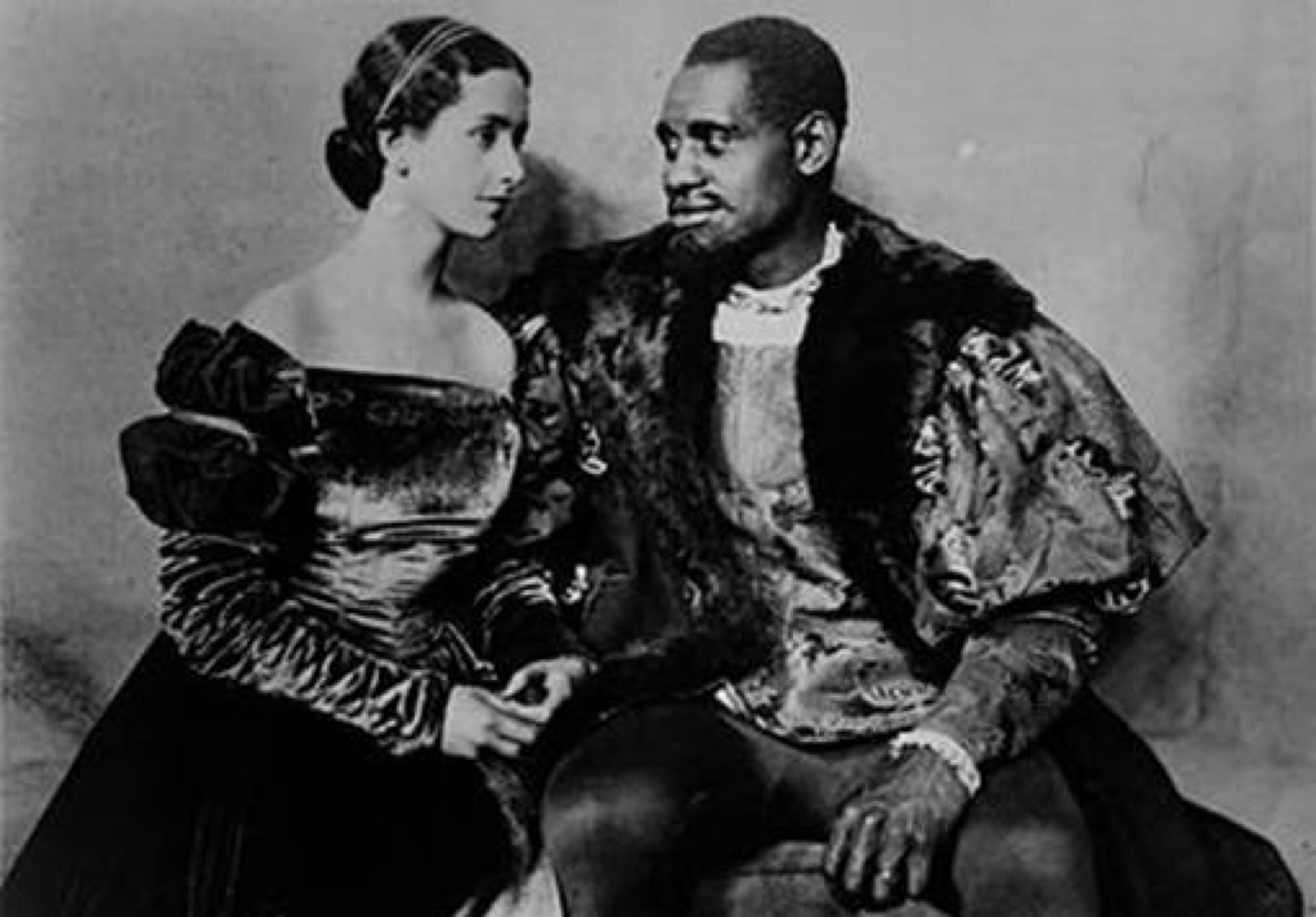
OTHELLO & DESDEMONA: English actress Peggy Ashcroft played Desdemona opposite Paul Robeson in a 1930 rendition of Othello. Regarded as one of the best productions of the era, the play ran for 295 performances.
SIR LAWRENCE OLIVIER
Olivier played Othello in a movie version released in December 1965. It was the first English language film of the play to be shot in colour, and all the action took place on a series of enlarged stage sets. The British actor and star of films such as Spartacus and Marathon Man, invented his own basso profundo voice, and devised a special walk as part of his preparation. He also acted in blackface — a darker black than the café-au-lait tones that had become customary for white Othellos since the early 1800s.
Olivier was meticulous about the make-up that would transform him into the Moor. ‘The whole thing will be in the lips and the colour,’ he told Life magazine in May 1964. ‘I’ve been looking at Negroes lips every time I see them on the train or anywhere, and actually, their lips seems black or blueberry-coloured, really, rather than red. But of course the variations are enormous. I’ll just use a little tiny touch of lake and a lot more brown and a little mauve’.
Despite Olivier’s studious approach, his blackface portrayal troubled American critics when the film opened there in 1966. The country was in the midst of the Civil Rights Movement, when sensitivities about black identity were at their height, and many saw Olivier’s chosen aesthetic as outdated. Unsurprisingly, the film played for just two days. But despite it all, the production received the highest ever number of Academy Award nominations for a Shakespeare film.
ANTHONY HOPKINS
In 1981 the BBC produced a full-length feature film version of Othello, directed by Jonathan Miller, and starring Anthony Hopkins as the lead, with Bob Hoskins as Iago. Hopkins’ appointment proved controversial, as the role was initially offered to African American actor James Earl Jones, who played Othello on Broadway that same year. But the British actors’ union, Equity, objected to an American being cast, and so instead of the role being awarded to a black British actor, Hopkins was appointed.
The star of Silence Of The Lambs, Hannibal and Remains Of The Day opted for an olive-skinned Moor, more Arab than African, and with long wavy hair. The production was also significant in that it was the last British television production of the play to feature a white lead. This occurred much later than in America, where a post-civil rights wave of political correctness meant that white Othellos had long fallen from favour.
LAURENCE FISHBURNE
It was not until 1995 that a black actor was cast in a major screen production of Othello. Laurence Fishburne, star of Apocalypse Now and The Matrix trilogy, played the Moor, opposite Kenneth Branagh’s Iago, in a film adaptation directed by Thandie Newton's husband Oliver Parker. Shot on location in Italy, the film added new set pieces, including a sex scene between Fishburne and Irène Jacob as Desdemona. The production was positioned as a sexual thriller, designed to appeal to modern audiences. The film poster featured Fishburne and Jacob in steamy embrace, stalked by Iago’s evil gaze. The New Yorker bought into the play’s sexual heat, describing Fishburne as ‘fierce and smouldering’.
In an unforeseen twist, when the film was released, critics drew parallels with the OJ Simpson trial that was running concurrently. Like life imitating art, they focused on the synergistic tale of a prominent black man embroiled in the brutal murder of his white spouse.
PATRICK STEWART
Othello went through a metamorphosis in the 1990s, as a new generation of directors began breaking with Shakespeare’s classical traditions in favour of contemporary interpretations which re-cast the play in the present, with new settings, modern costumes and radical approaches to casting. One notable example starred Patrick Stewart, better known as captain Jean-Luc Picard of Star Trek: Next Generation. In what had become an exclusively African American role in the US, Stewart was the first white Othello for decades. In November 1997 he featured in a radical re-interpretation of the play at the Shakespeare Theatre, Washington D.C. In what was termed a ‘photo negative’ production by British director Jude Kelly, all the other cast members aside from Stewart were black. This race reversing was intended to both challenge stereotypes and to reflect the endlessly adaptive nature of Shakespeare’s work. To give the performance a modern spin, the male characters were decked out in combat fatigues, and Stewart’s shaved head was accessorised with a hooped earring and a serpent tattoo.
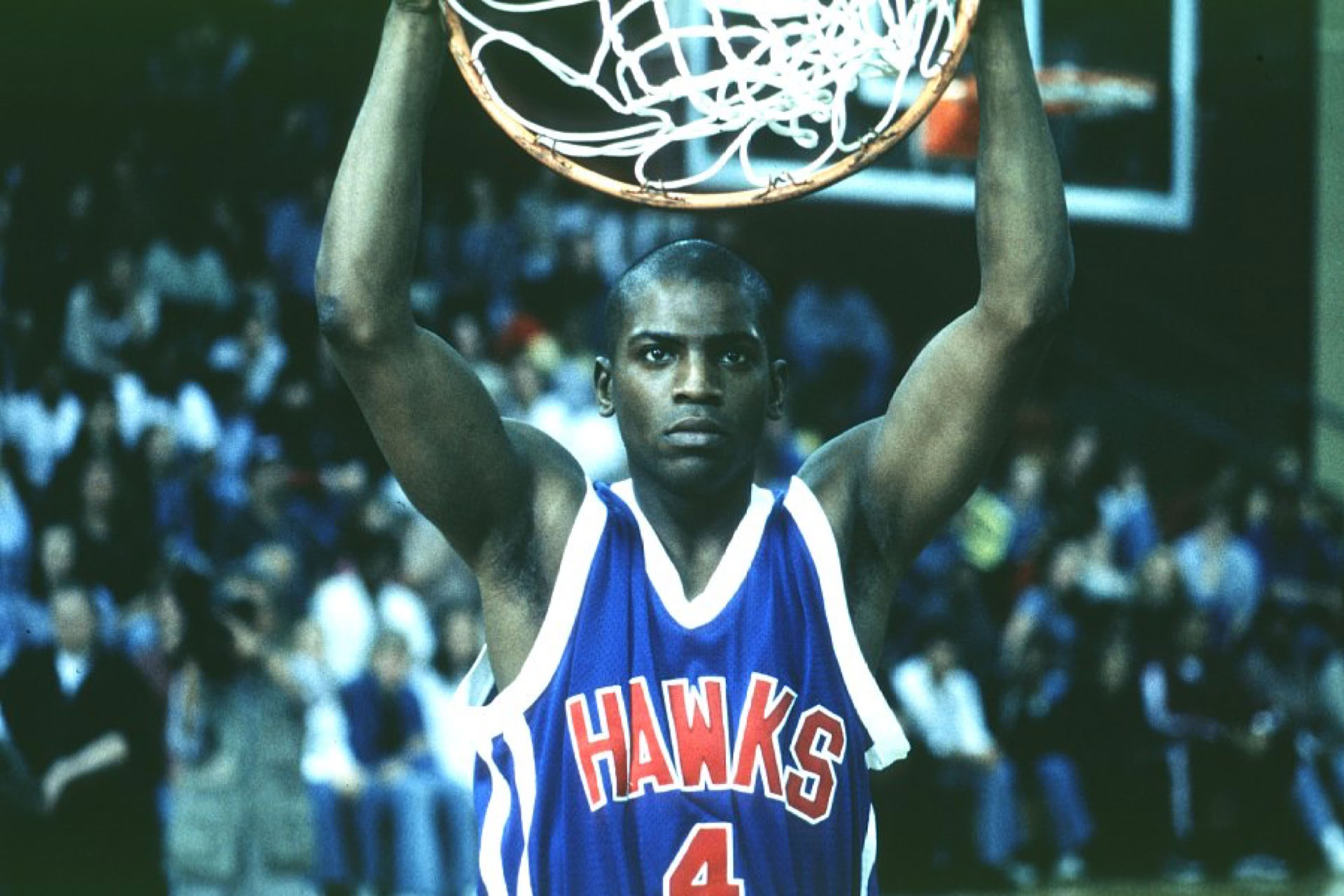
OTHELLO AT THE HOOP: American actor Mekhi Phifer played Othello in a modernised movie production set in a US high school.
MEKHI PHIFER
In August 2001 Mekhi Phifer starred in an updated movie version of Shakespeare’s play, re-titled O. This was an urban Othello for the hip-hop generation, written by Brad Kaaya and directed by Tim Blake Nelson. The movie substituted ancient Venice for the basketball court of an American high school, where Othello, now Odin James, was the star player, and the school’s sole African American student. Desdemona (re-named Desi), was played by Julia Stiles, and Iago (re-named Hugo), by Josh Hartnett. The film injected many of it’s own contemporary scenes and references, while retaining Shakespeare’s basic plot, which had a fresh context here, given the longstanding cultural anxieties about race in the US. The ending goes according to plan, with Odin shooting himself in the heart, and Hugo being arrested by police.
THOMAS THIEME
Luk Perceval directed this German production by the Munich Kammerspiele, staged at the Royal Shakespeare Theatre, Stratford-upon-Avon, on April 26, 2006. It was notable not simply because Othello, played by Thomas Thieme, was white, but also because Shakespeare’s original text was re-scripted by writers Gunter Senkel and Feridun Zaimoglu. In their version, Iago’s dialogue became even more abrasive. He refers to Othello as ‘Choco’, and Cassio as a ‘smarmy little faggot’. All the actors were fitted out in contemporary black clothing, aside from Desdemona, who was dressed in white. The stage set was bare apart from a black piano symbolically mounted upon a white one, at which a pianist played a continuous jazz score in the background.
CHIWETEL EJIOFOR
In the age of high concept revisionary Shakespeare, director Michael Grandage returned to Othello’s classical roots in a thrilling version at London's Donmar Warehouse, which premiered on December 4 2007. This back-to-basics production starred Chiwetel Ejiofor — who starred in the films Love Actually, American Gangster and 12 Years A Slave — as the Moor, paired with Ewan McGregor’s Iago. The play was an instant hit with both audiences and critics. Susannah Clapp in The Observer called it ‘the best Othello for generations’. The role catapulted Ejiofor into the elite club of super-Shakespeareans, winning him the 2008 Olivier Award along the way. John Lahr in The New Yorker described him as bringing to the character ‘a natural nobility and a decency that are a kind of poetic revelation’. Tickets for the three-month run sold out a matter of hours after going on sale, with some reportedly changing hands for up to £2,000 each on eBay.

OTHELLO TRANSFORMED: London theatre group Frantic Assembly’s unique 2008 performance of Shakespeare’s play.
FRANTIC ASSEMBLY
In 2008, artistic directors Scott Graham and Steven Hoggett of London-based theatre group Frantic Assembly staged a unique adaptation of Othello. In their version the action was transposed from ancient Venice to modern-day northern England — a decaying working class town in which the Moor was the sole black inhabitant. He worked as head doorman at a troublesome local pub. In place of a classical stage set, the action centred around a pool table and slot machine, and the characters spoke with UK regional accents. With young actors Jimmy Akingbola as Othello, and Claire-Louise Cordwell as Desdemona, the performance combined movement and dance with Shakespeare’s original dialogue, in a bruising, distinctly British tour-de-force.
JAMES EARL JONES
Jones had already famously played Othello on Broadway back in 1981 — but this was different. On May 12, 2009, just months after taking office, President Obama hosted the first White House Evening of Poetry, Music and the Spoken Word. Jones — who voiced the character of Darth Vader in the Star Wars films — took to the stage with the majestic demeanour of a well-loved politician, and mesmerised the celebrity audience with a masterful six-minute monologue from Act I, Scene III of the play. In doing so he reset the standard for all master Shakespeareans.

OBAMA’S OTHELLO: James Earl Jones recites Act 1, Scene III from Shakespeare’s Othello, for Barack Obama in 2009.
SUSANNE WOLFF
Perhaps the most original and controversial Othello ever was staged at Berlin’s Deutsches Theater in February 2011. For director Jette Steckel the casting of the lead veered as far away from the old traditions of race and gender as it was possible to go. Her Othello was played by a white woman, German actress Susanne Wolff. This scrambled the sexual dynamics of the original, as it now meant that Desdemona, still cast as female, was in love with a woman.
Steckel crafted a radical re-appraisal of the play that sought to explore the various facets of Othello’s character — ‘the stranger, the monster, the animal, the enemy, the man, the woman and the child,’ stated the release. Part of the mechanism devised to illustrate this involved the Moor going through several bizarre costume changes. Wolff started off in simple white shirt and black trousers: then, as Othello learned of Desdemona’s alleged infidelity, she reappeared in a Gorilla costume, perhaps a metaphor for the Moor’s animal rage, but more interestingly, a jolting reminder of how Africans were perceived within sections of the white Elizabethan consciousness, and still are in some quarters today. Later, Othello then metamorphosed into a blonde in a red dress, and then for the final scene reappeared wearing a Public Enemy T-shirt. Simultaneously, in the midst of all this, an MC roamed the stage with a microphone, performing vocal sound effects and human beat box riffs.

